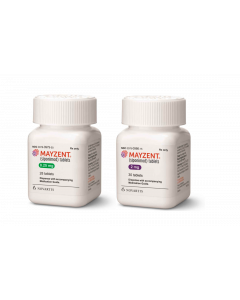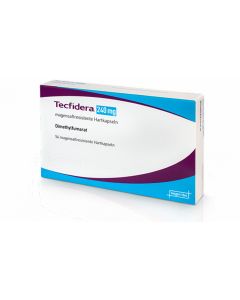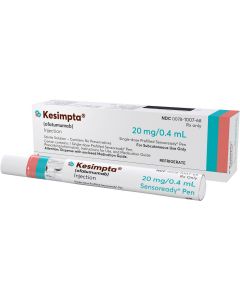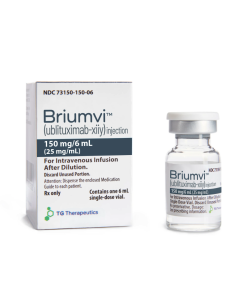Opciones de acceso a la esclerosis múltiple (EM)
Multiple Sclerosis is a chronic, inflammatory, autoimmune disease of the central nervous system that disrupts communication between the brain and other parts of the body. One of the most common causes of neurological disability in young adults, it two to three times more prevalent in women than men. For most people with MS, episodes of worsening function (relapses) are initially followed by recovery periods (remissions). Over time, recovery may be incomplete, leading to progressive decline in function and increased disability. Most patients experience their first symptoms of MS between the ages of 20 and 402. Whilst the cause of MS is still unknown, most researchers believe the disease is caused ... Read more »by the immune system incorrectly attacking and damaging myelin, the protective sheath around the nerve cells in the central nervous system (the brain and spinal cord). Repeated bouts of inflammation can leave a small scar (sclerosis) which can permanently damage nerve fibres. A typical person with MS would have many (multiple) small areas of scarring form in the nerve cells. Damage can result in a difficult or impeded signalling between the brain and the rest of the body. It is hypothesised that such assaults may be linked to an unknown environmental trigger, perhaps a virus. An estimated 2.5 million people around the world have MS. What are the symptoms? Since there is no single diagnostic test for MS, the diagnosis can be difficult, delayed or even incorrect. Symptoms are very varied: each person’s experience of MS is different and most people will only experience a small number of all the possible symptoms. According to the MS Trust, the "most common symptoms around the time of diagnosis are fatigue (a kind of exhaustion which is out of all proportion to the task undertaken), stumbling more than before, unusual feelings in the skin (such as pins and needles or numbness), slowed thinking or problems with eyesight." Is MS becoming more common? "Although more people are being diagnosed with MS today than in the past, the reasons for this are not clear. Likely contributors, however, include greater awareness of the disease, better access to medical care and improved diagnostic capabilities. There is no definitive evidence that the rate of MS is generally on the increase." - National Multiple Sclerosis Society At what age do MS symptoms usually appear? Less than 1 in 100 people with multiple sclerosis (MS) will experience symptoms before the age of 10, whilst 2–5 of every 100 people experience their first symptoms before the age of 18. Most people are diagnosed between the ages of 20–40 but the number of people being diagnosed under the age of 18 is increasing. What are the different types of MS? MS can be divided into three main types: relapsing-remitting MS, secondary progressive MS, and primary progressive MS. Relapsing-remitting MS An estimated 85% of patients have this form of MS, involving episodes of worsening function (relapses) that are initially followed by recovery periods (remissions). Secondary progressive MS is a more advanced form of the disease. Studies that have monitored people with MS over a long period of time suggest that in 10 years, 50% of people diagnosed with relapsing-remitting MS will have developed secondary progressive MS. Some people experience secondary progressive MS when they receive their diagnosis. Peoples’ experience of secondary progressive MS can vary widely. Primary progressive MS Primary progressive MS (PPMS) is characterised by steadily worsening function from the onset of symptoms, often without early relapses or remissions. An estimated 10% of patients have this form. The term ’progressive' is used to describe the increase in disability in MS, the rate of which varies from person to person. Is there a cure for MS? Unfortunately there is currently no cure for multiple sclerosis . Treatments instead focus on helping patients recover from attacks, slowing the progression, and managing symptoms (enhancing quality of life). For a list of medicines that have been approved for MS, please see below. If a medicine has been approved by at least one reputable medical authority in the world but it is not available in your country, you may be able to purchase it via our service; we may be able to source and deliver it to you if you can provide a prescription from your doctor. Alongside the prescription of medicines that have specifically approved to treat MS, there are other treatments that an MS specialist may recommend: Physical therapy involving stretching and strengthening exercises, or regular activity like aqua therapy, under the instruction of a physical therapist can help to manage leg weakness and other gait problems often associated with MS. Aclofen and tizanidine can be prescribed for experiencing painful or uncontrollable muscle stiffness or spasms (contact your physician for more information). Other medications can also be prescribed for fatigue, depression, sexual dysfunction, pain, and bladder or bowel problems associated with MS. Whilst there is no specific ‘MS diet’, a healthy, balanced diet low in fats and sugars and high in fibre and vegetables are essential for people with chronic illnesses. Patients should consult their physician before using any nutritional supplements or vitamins. MS is a highly researched disease and numerous clinical studies are being conducted. As soon as a new medicine becomes available and is approved by a major regulatory authority, everyone.org will review it and possibly make it available to patients globally as quickly as possible.













